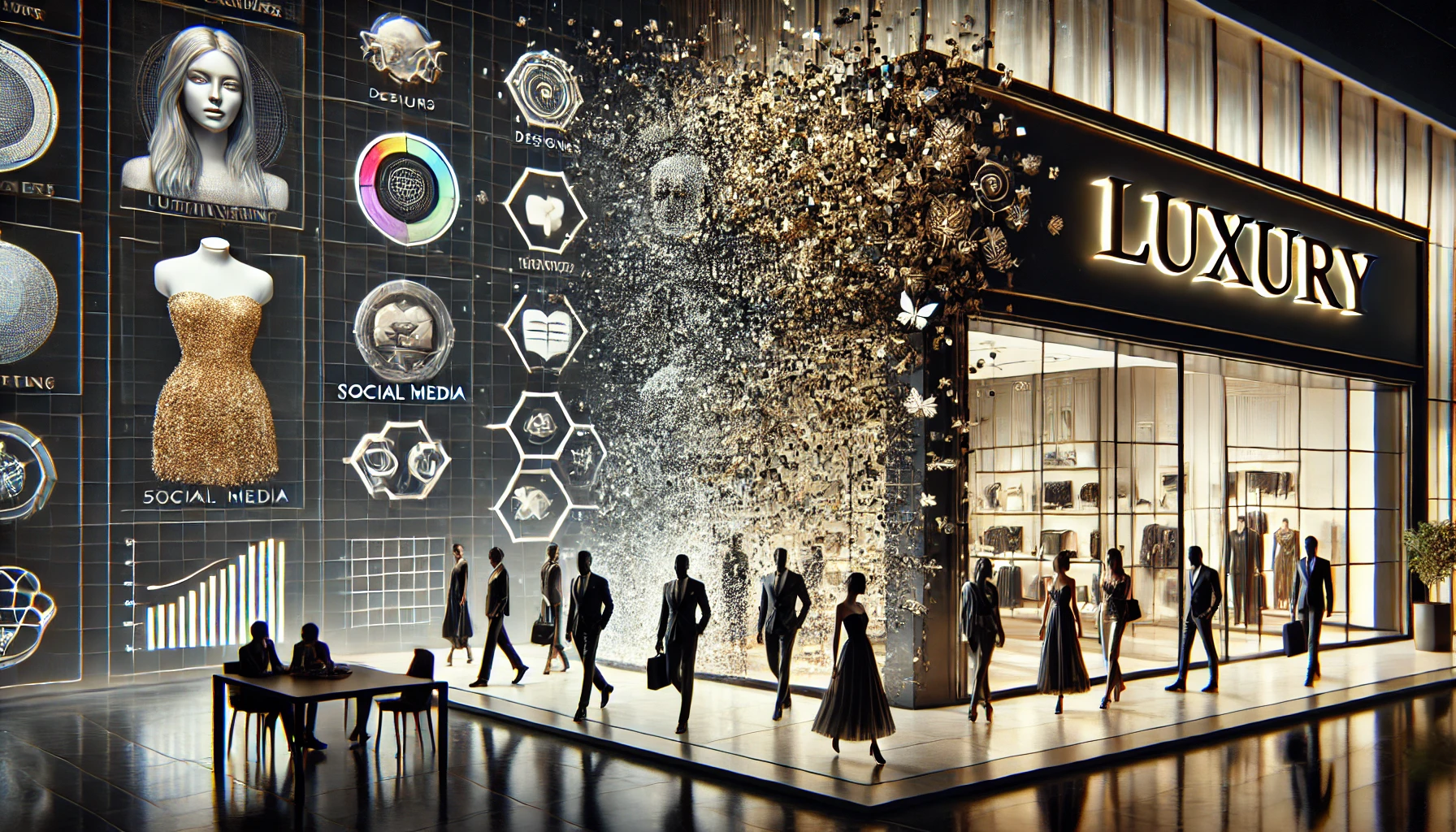Blogs
Why the Smartest Luxury Brands Are Rethinking Marketing Altogether

In a landscape where marketing is everywhere — loud, relentless, and algorithmically optimised — luxury brands are quietly opting out. While traditional marketing models still dominate mainstream sectors, the smartest players in luxury are taking a radically different approach: they are rethinking what marketing even looks like.
This shift is not just aesthetic. It is strategic — and it is redefining how premium and heritage brands engage with their audiences.
Marketing Fatigue in the Luxury Space
Luxury audiences have become experts at filtering out noise. Their feeds are saturated, their inboxes full, and their patience for interruption is almost zero. Traditional marketing — whether in the form of digital ads, influencer tie-ins, or viral campaigns — risks feeling not only ineffective but actively damaging.
For brands operating in the premium space, the challenge is not just visibility — it is relevance. This is where many stumble. When every brand is trying to ‘disrupt,’ the most sophisticated luxury players are choosing instead to distill — cutting through not by shouting, but by showing up with precision, intent, and elegance.
As one London-based luxury marketing agency, SUM, puts it:
“Luxury brands cannot win the volume game. They win by crafting presence, not campaigns.”
Why Luxury Brands Must Think Beyond Performance Marketing
There was a time when performance marketing — with its precise targeting and instant metrics — looked like the future for every brand. But luxury is different. The very things that make performance marketing effective — repetition, ubiquity, transactional CTAs — undermine the scarcity, aspiration, and editorial authority that luxury brands must maintain.
Instead of obsessing over clicks and conversions, luxury marketing must prioritise perception management, cultural relevance, and long-term desirability. It is a slower, less predictable model — but one that builds brands that endure.
This is not to say that digital marketing tools have no place in luxury — but they need to be wielded with far more restraint. It is not about rejecting digital; it is about using it with care.
Strategy First: The SUM Approach to Luxury Marketing
At SUM, marketing does not exist in isolation. It is seen as an extension of strategy — something that should always follow brand clarity, not precede it.
Without a clear strategic foundation, marketing risks becoming scattergun. But with a well-defined brand strategy in place — one that articulates positioning, narrative, and visual identity — marketing becomes a cohesive, deliberate extension of the brand itself.
SUM’s process typically begins with strategy and identity work. From there, marketing activity is developed to align directly with the brand’s intended perception — not just to drive traffic, but to reinforce the value and cultural cachet of the brand.
This integrated model is particularly attractive to founder-led luxury brands who want every output — from social content to brand films — to feel part of a singular, coherent vision.
Learn more about SUM’s strategy-first approach to branding here.
Building Desire, Not Just Awareness
The most compelling luxury marketing does not just inform or entertain — it builds desire. And desire is not built by being everywhere. It is built by being in the right places, in the right way, with the right tone.
Editorial partnerships, private experiences, selective social presence — these are the tools of modern luxury marketing. Brands like Bottega Veneta have famously eschewed traditional social media in favour of controlled, owned platforms. Others cultivate scarcity not just in product, but in visibility.
This ethos aligns with what SUM calls “strategic restraint” — the idea that a brand’s power often lies in what it chooses not to say, not to do, and not to show.
The Role of Digital Branding in Modern Luxury
While traditional marketing is losing its sheen in the luxury space, digital branding has never been more important. The digital storefront — whether it is a website, digital content, or social channel — is often the first brand touchpoint.
But digital branding in luxury is not about functionality alone. It is about crafting digital spaces that feel as considered as a physical boutique. That means seamless design, editorial pacing, thoughtful interactivity, and a brand voice that feels human, not automated.
At SUM, the focus for luxury clients is on designing digital experiences that reflect the same care, attention, and refinement as the brand’s physical presence. Marketing becomes a natural output of this foundation — not a separate, tactical exercise.
Final Thoughts
Luxury brands are not immune to the pressures of growth, scale, and visibility. But the ones that endure understand that marketing cannot be an afterthought — nor can it follow the rules of mainstream consumerism.
They require marketing that is built on strategy, executed with discretion, and designed to cultivate desire rather than chase volume.
For founder-led brands and heritage houses alike, the lesson is clear: if your marketing looks like marketing, you may already be off course.
To see how SUM helps brands bridge the gap between strategy, identity, and marketing, visit our luxury marketing agency page.

-

 Resources4 years ago
Resources4 years agoWhy Companies Must Adopt Digital Documents
-

 Resources3 years ago
Resources3 years agoA Guide to Pickleball: The Latest, Greatest Sport You Might Not Know, But Should!
-

 Resources3 months ago
Resources3 months agoTOP 154 Niche Sites to Submit a Guest Post for Free in 2025
-

 Resources3 months ago
Resources3 months ago50 Best AI Free Tools in 2025 (Tried & Tested)